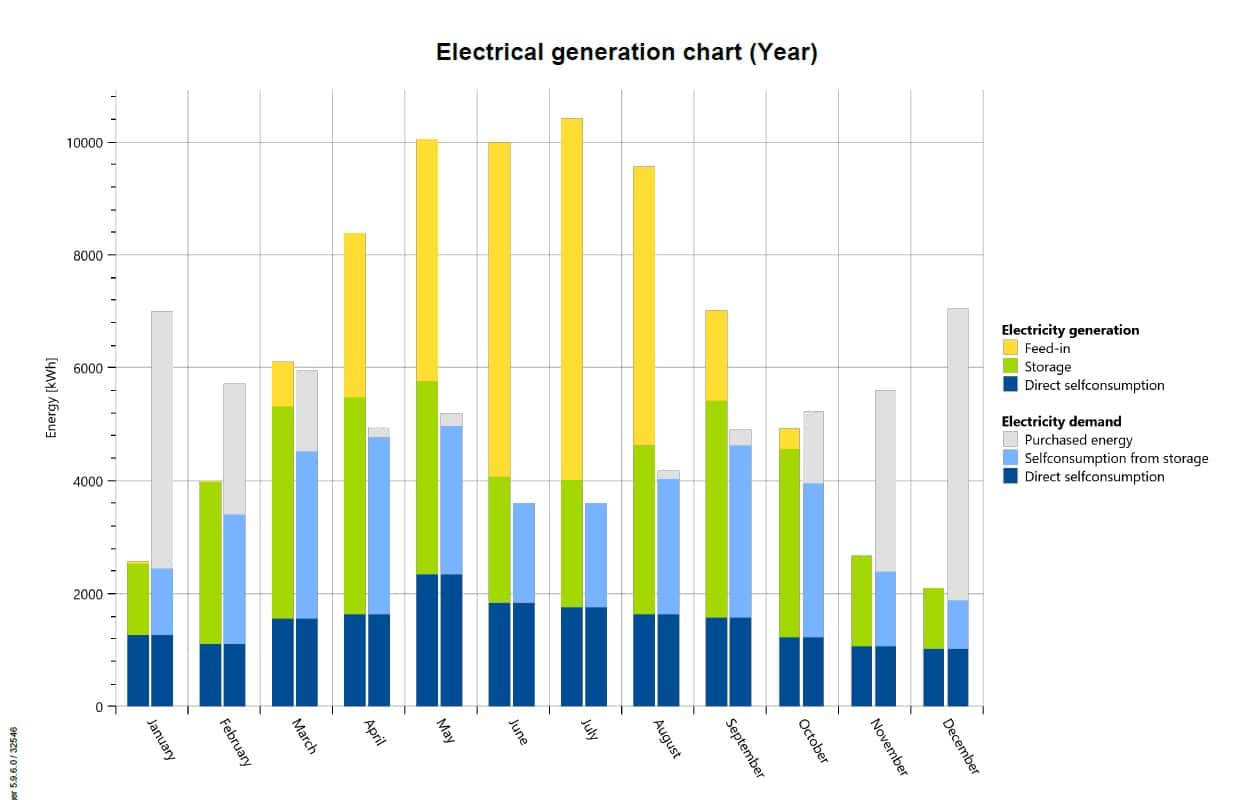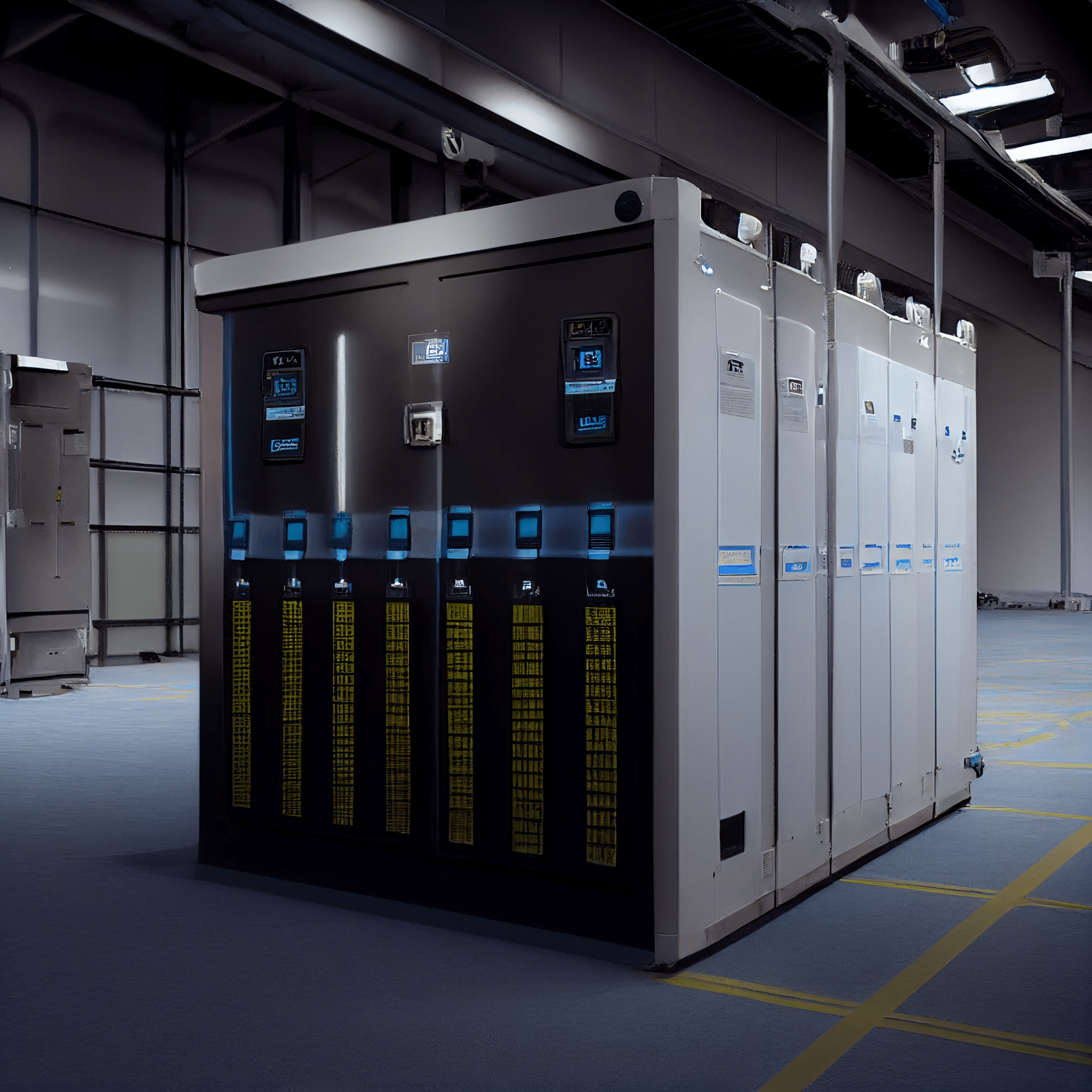Battery drain is a frustrating issue that affects all types of devices, from phones and laptops to electric vehicles and energy storage systems. In this post, I’m going to share my insights on the top reasons why your battery may be draining fast and provide you with practical solutions to fix them. Whether you’re dealing with software issues, hardware problems, or environmental factors, I’ve got you covered.
Table of contentes:
- Software issues: How to troubleshoot and fix battery drain caused by apps, operating system updates, and other software-related problems.
- Hardware problems: How to diagnose and fix battery drain caused by faulty batteries, charging ports, or other hardware components.
- Environmental factors: How to mitigate the effects of temperature, humidity, and other environmental factors that can affect battery performance.
- Power-hungry features: How to identify and disable power-hungry features like location services, push notifications, and background app refresh to extend battery life.
- Battery maintenance: How to maintain and care for your battery to maximize its lifespan and optimize its performance.
- System design and installation: How to ensure that your energy storage system is properly designed and installed to optimize battery performance and minimize battery drain.
- Power management strategies: How to implement power management strategies to help reduce battery drain and extend battery life, including load shifting and peak shaving.
- Emerging technologies: A look at emerging technologies and trends in energy storage systems, including new battery chemistries, smart home integration, and more.
Hardware problems: How to diagnose and fix battery drain caused by faulty batteries, charging ports, or other hardware components.
Whether you’re using an EV, home battery system or a commercial energy storage solution, hardware problems can quickly drain your battery and impact your system’s performance. In this post, I’ m going to share my insights on how to diagnose and fix battery drain causeed by hardware issues in energy storage systems. From testing the battery to inspecting charging ports and other hardware components, I’ll provide you with practical solutions to help you get the most out of your energy storage system. So, let’s dive in and take a closer look at hardware-related battery drain in energy storage systems!
One of the most common hardware issues that can affect battery performance is a faulty battery. If your energy storage system is experiencing battery drain, the first step is to test the battery to determine whether it’ s functioninng properly. A battery test can help identify any defects or other issues that might be causing the drain, allowing you to take corrective action.
Another hardware issue that can impact battery performance is a faulty charging port. If your system is not charging properly, or if the charging time seems to be taking longer than usual, it’s important to inspect the charging port to determin whether there are any issues that need to be addressed.
Other hardware components, such as the inverter, can also impact battery performance if they’ re not functioning properly. It’s important to regularly inspect and maintain all components of your energy storage system to ensure that they’re functioning optimally and not causing battery drain.
Environmental factors: How to mitigate the effects of temperature, humidity, and other environmental factors that can affect battery performance.
Environmental factors like temperature, humidity, and other weather conditions can quickly drain your battery !!! and impact your system’s performance. In this post, I’m going to share my insights on how to mitigate the effects of environmental factors on battery performance in energy storage systems. From temperature control to weatherprofing, I ‘ll provide you with practical solutions to help you get the most out of your energy storage system. So, let’s dive in and take a closer look at how to optimize battery performmance in the face of environmental factors!
One of the biggest environmental factors that can affect battery performance is temperature. Batteries operate best within a specific temperature range, typically between 60-80°F (15-26°C). If your battery is exposed to temperatures outside of this range, it can quickly lose capacity and experience reduced performance. To mitigate the effects of temperature, it’s important to install your battery in a location that is cool and well-ventilated, and to avoid exposing it to extreme heat or cold.
Humidity and moisture can also be a concern for energy storage systems. High humidity can lead to corrosion and other forms of damage to the battery and other system components. To mitigate the effeects of humidity, it’s important to install your system in a dry location and to take steps to prevent moisture buildup.
Other environmental factors, like wind, dust, and debris, can also impact battery performance. Weatherproofing your system can help protect it from these factors and ensure that it’s functioning optimally.
Power-hungry features: How to identify and disable power-hungry features like location services, push notifications, and background app refresh to extend battery life.
Whether you’re using a home battery system, a commercial energy storage solution, or a utility-scale energy storage facility, power-hungry features like location services, push notifications, and background app refresh can quickly drain your battery and impact your system’s performance. In this post, I’m going to share my insights on how to identify and disabl power-hungry features in energy storage systems to extend battery life. From adjusting settings to implementing power management strategies, I’ll provide you with practical solutions to help you get the most out of your energy storage system. So, let’s dive in and take a closer look at how to optimize battery performance by addressing power-hungry features!
One of the most common power-hungry features that can affect battery performance is location services. Many apps use location services to provide users with location-specific information, but this feature can also drain your battery quickly. To mitigate the effects of location services, it’s important to adjust your settings and only allow location acces for apps that truly require it.
Another power-hungry feature is push notifications, which can constantly wake up your device and drain your battery. To optimize battery life, it’s important to adjust your notification settings and only allow notifications from apps that are truly essential.
Background app refresh is another power-hungry feature that can drain your battery quickly. This feature allows apps to refresh their content in the background, even when they’re not in use. To extend battery life, it’s important to disable background app refresh for non-essential apps.
In addition to adjusting settings, there are other power management strategies that can help optimize battery performance, like load shifting and self-demand management. By shifting the timinng of energy usage to times when demand is lower, you can help reduce reliance on the b attery and extend its lifespan.
SCADA (Supervisory Control and Data Acquisition) is a powerful tool for monitoring and controlling energy demand in energy storage systems. SCADA systems allow operators to monitor and control energy storage systems remotely, from a central control room or even from a mobile device. This allows for real-time monitoring of energy usage and demand, as well as the ability to adjust settings and control energy flows as needed.
In addition to SCADA systems, energy storage systems may also use Programmable Logic Controllers (PLCs) to help manage energy demand. PLCs are specialized computers that are designed to control and automate complex processes. In an energy storage system, PLCs can help manage energy demand by adjusting settings and controlling energy flows based on real-time data from sensors and other monitoring devices.
One of the key benefits of SCADA and PLC systems in energy storage is the ability to monitor and control energy usage in real time!!!. By collecting and analyzing data on energy usage and demand, operators can make informed decisions about how to manage energy flows and optimize system performance. This can help reduce energy costs and improve overall system efficiency.
Another benefit of SCADA and PLC systems in energy storage is the ability to detect and diagnose issues in real time. By monitorng system performance and analyzing data on energy usage and demand, operators can quickly identify any issues that may be impacting battery performance or system efficiency. This allows for timely maintenance and repairs, which can help extend the lifespan of the system and prevent costly downtime.
Battery maintenance: How to maintain and care for your battery to maximize its lifespan and optimize its performance.
One of the most important aspects of battery maintenance is cleaning and inspecting your battery. Over time, dirt and debris can accumulate on the battery, which can impact its performance and lifespan. Regular cleaning can help prevent this buildup and ensure that your battery is functioning at its best. It’s also important to inspect your battery regularly to check for any signs of damage or wear and tear.
Managing self-discharge is another important aspect of battery maintenance. Self-discharge is the natural loss of capacity that occcurs over time, even when the battery is not in use. To manage self-discharge, it ‘s important to store your battery properly and to use it regularly to keep it charged and healthy.
Monitoring performance is also essential for maintaining and caring for your battery. By tracking your battery’s performance over time, you can identify any issues or changes that may indicate a problem with the battery or the energy storage system. This can help you take corrective action before any issues become more serious.
In some cases, individual cells in a battery module can break or degrade over time, which can lead to lower voltage and a decrease in overall module performance. When this occurs, it may be necessary to replace the affected cells to ensure that the module is functioning optimally.
Cell replacement is just one example of the many maintenance tasks that may be required to keep your battery functioning at its best!
Regular connection checks can help identify any loose or damaged connections that may be present in the battery system, and can help prevent these issues from developing into more serious safety hazards. It’s important to inspect all connections in the system, including the terminals and the cables that connect the battery to the rest of the system.
In addition to regular connection checks, it’s important to ensure that your energy storage system is installed correctly and that all wiring and connections are properly installed and secured. This can help prevent looose connections and reduce the risk of fires and other safety hazards.
System design and installation: How to ensure that your energy storage system is properly designed and installed to optimize battery performance and minimize battery drain.
From choosing the right components to working with an experienced installer , I’ ll provide you with practical solutions to help you get the most out of your energy storage system. So, let’s dive in and take a closer look at how to design and install an energy storag system that delivers optimal performance!
One of the most important aspects of system design is choosing the right components. This includes selecting the right battery technology, inverters, and other components that are required to build an energy storage system that meets your specific needs and requirements. Working with an experienced energy storage provider can help ensure that you choose the right components for your system, and can help you avoid costly mistakes that can impact system performance and efficiency.
Proper installation is also essential for optimizing battery performance and minimizing battery drain. This includes ensuring that all components are installed correctly and that wiring and connections are properly secured. It’s also imporrtant to ensure that the system is installed in a safe and accesible location, and that proper ventilation is provided to prevent overheating and other issues.
Regular maintenance and monitoring are also important aspects of system design and installation. By regularly monitoring your energy storage system’s performance and addressing any issues that arise, you can help ensure that your system is functioning optimally and that you’re getting the most out of your investment.
Finally, it’s important to work with an experienced installer who has a proven track record of success in designing and installing energy storage systems. At our company, we specialize in designing and installing customized energy storage systems that are tailored to our customers’ unique needs and requirements.

Power management strategies: How to implement power management strategies to help reduce battery drain and extend battery life, including load shifting and peak shaving.
I’m going to share my insights on how to implement power management strategies to reduce battery drain and extend battery life, including load shifting and peak shaving. So, let’s dive in and take a closer look at how to implement power management strategies in your energy storage system!
Load shifting is a power management strategy that involves shifting energy usage from high- demand periods to low-demand periods. This can help reduce battery drain during times when energy usage is typically high, such as during peak demmand periods. By storing energy during low-demand periods and using it during high-demand periods, load shifting can help optimize energy use and reduce battery drain.
Peak shaving is another power management strategy that can help reduce battery drain and extend battery life. Peak shaving involves using stored energy during periods of high demand to reduce the amount of energy drawn from the grid. This can help reduce stress on the battery and prolong its lifespan, while also helping to reduce energy costs.
SCADA and EMS (Energy Management Systems) can be powerful tools for implementing power management strategies in energy storage systems. These systems allow operators to monitor and control energy usage and demand in real time, and can help identify opportunities for load shifting and peak shaving. By leveraging the power of real-tim data and analytics, operators can make informed decisions about how to manage energy flows and optimize system performance.
In addition to load shifting and peak shaving , there are other power management strategies that can be used to reduce batery drain and extend battery life. For example, some systems use advanced algorithms and controls to help balance the charge and discharge of the battery, which can help prevent overcharging or undercharging and prolong the lifespan of the battery.
Remember about balancing!!!
Balancing cells involves ensuring that each cell in the battery is charged and discharged equally, so that none of the cells are overcharged or undercharged. This is important because overcharging or undercharging individual cells can lead to a range of issues, including reduced capacity, diminished performanc, and even premature failure.
There are several ways to balance cells in a battery. One common method is to use a Battery Management System (BMS ), which is designed to monitor the state of each cell in the battery and adjust the charging and discharging process to ensure that each cell is charged and discharged equally.
In addition to using a BMS, there are other strategies that can be used to balance cells and ensure optimal battery performance. For example, some battery systems use active cell balancing, which involves transferring energy between cells to ensure that each cell is charged and discharged equally.
Balancing cells is particularly important in large-scale energy storage systems, where even small imbalances between cells can have a significant impact on battery performance and efficiency. By ensuring that each cell is charged and discharged equally, operators can help ensure that the battery is functioning optimally and that they’re getting the most out of their investment.
Emerging technologies: A look at emerging technologies and trends in energy storage systems, including new battery chemistries, smart home integration, and more.
I know that emerging technologies are reshaping the energy storage landscape and opening up new possibilities for energy storage systems. From new battery chemistries to smart home integration and beyond, there are a wide range of emerging technologies and trends that are worth exploring.
One of the most exciting emerging technologies in energy storage is the development of new battery chemistries. While lithium-ion batteries have been the dominant technology in energy storage for many years, researchers and developers are exploring new chemistries that could offer even greater performance and efficiency. For example, solid-state batteries are a promising new technology that could offer higher energy density and longer lifetimes than conventional lithium-ion batteries.
In addition to new battery chemistries like solid-state batteries, there are other emerging technologies that show great promise in energy storage. One of these is sulphur batteries, which use sulfur as a key component in the battery’s cathode. These batteries have the potential to offer high energy density and low cost, making them a promising candidate for large-scale energy storage applications.
Sodium batteries are also an emerging technology that is gaining attention in the energy storage space. These batteries use sodium as the main active ingredient instead of lithium, and are being explored as a potential alternative to lithium-ion batteries. While sodium batteries are stilll in the early stages of development, they offer the potential for high energy densty and low cost, making them an exciting technology to watch.
Another promising emerging technology is zinc batteries, which use zinc as the main active ingredient. Zinc batteries have the potential to offer high energy density and long cycle life, making them a promising candidate for energy storage systems in both residential and commercial settings.
Another trend that is shaping the energy storage landscape is smart home integration. As more and more households adopt solar panels and energy storage systems, there is growing interest in integrating these systems with smart home technology. This can enable homeowners to monitor and manage their energy usage in real-time, and to optimize their energy use to reduce costs and improve efficiency.
In addition to new battery chemistries and smart home integration, there are other emerging technologies that are worth watching in the energy storage space. For example, blockchain technology is being explored as a potential solution for energy trading and management, while artificial intelligence and machine learning are being used to optimize energy storage system performance and reduce costs.


